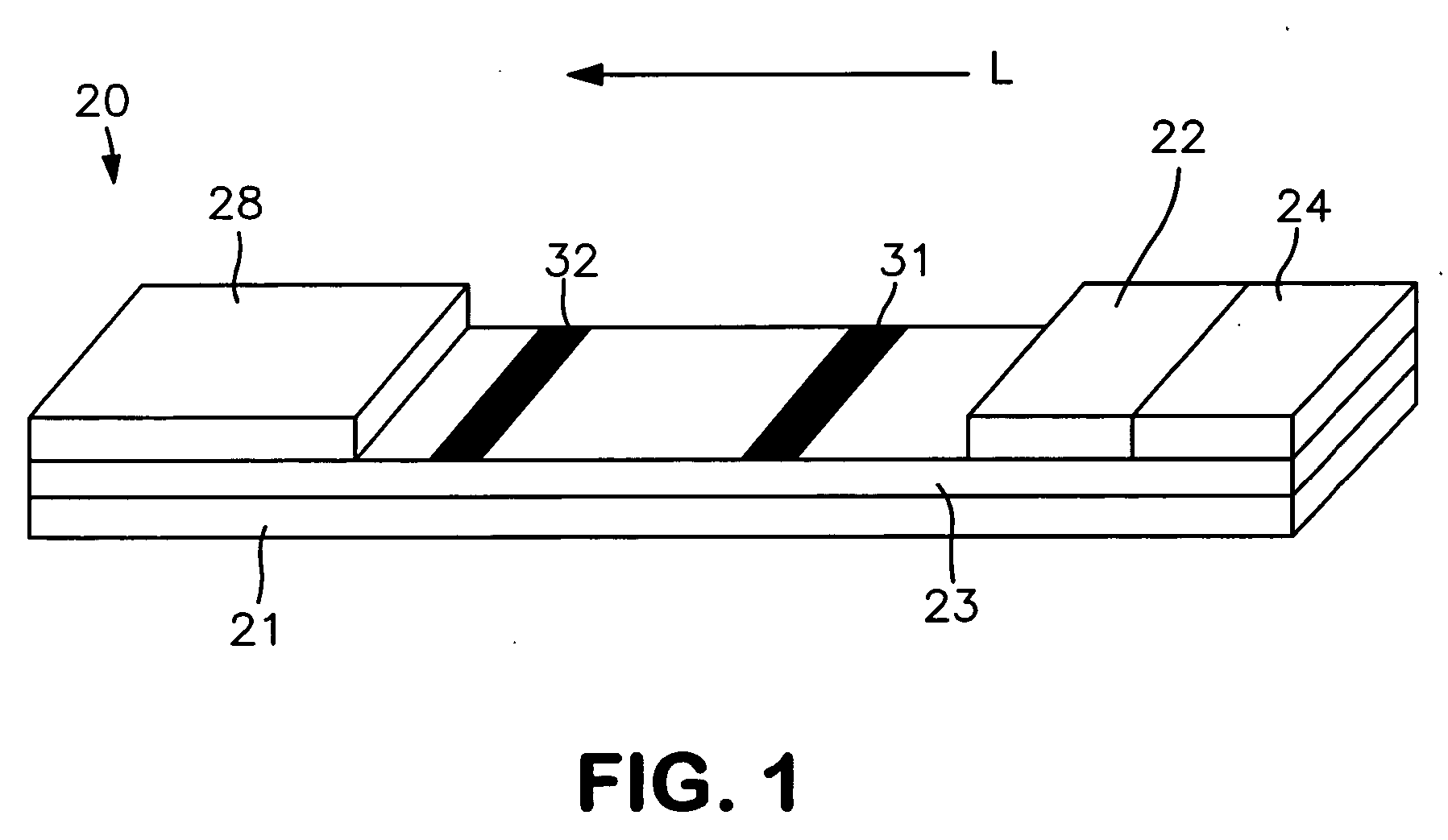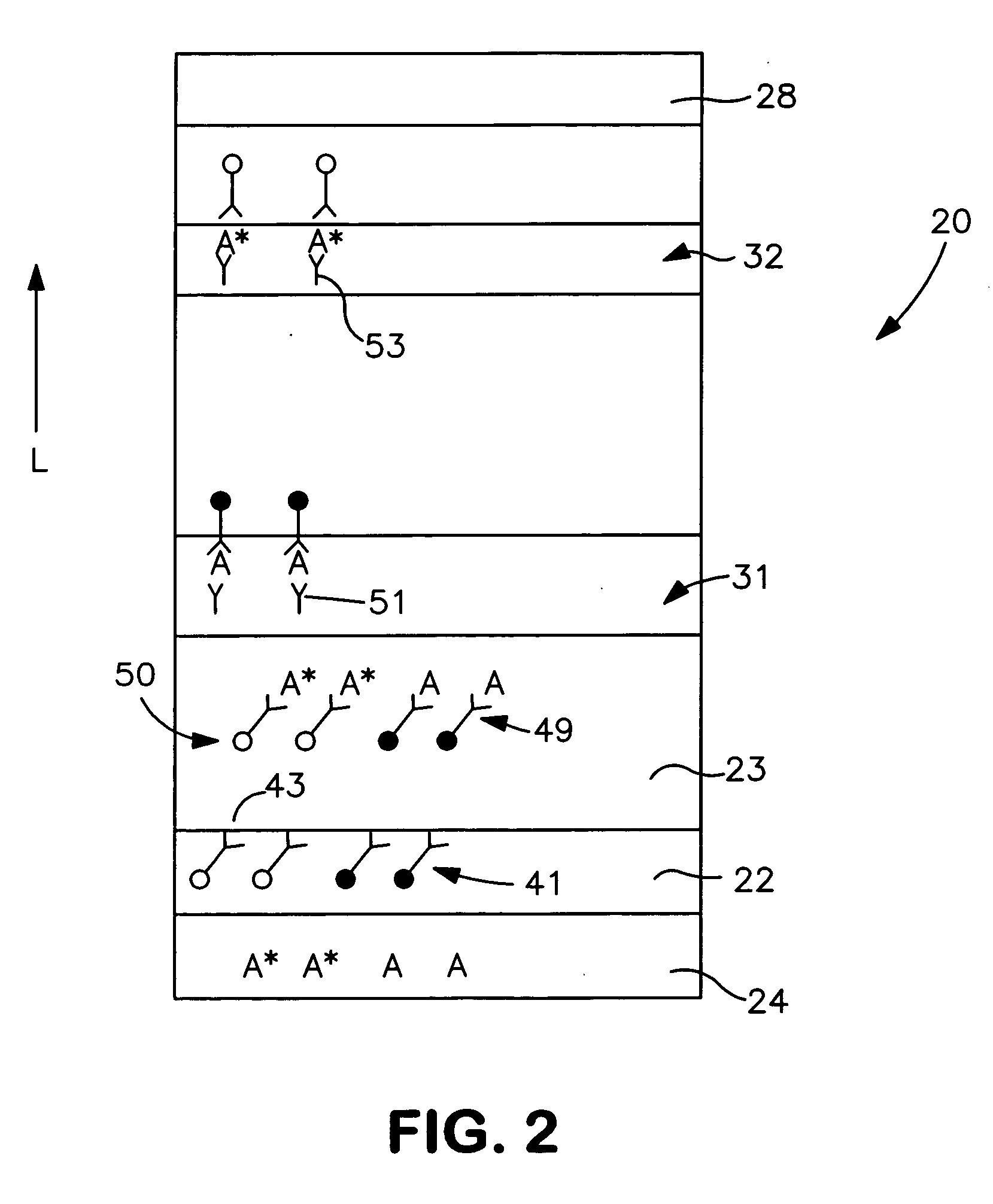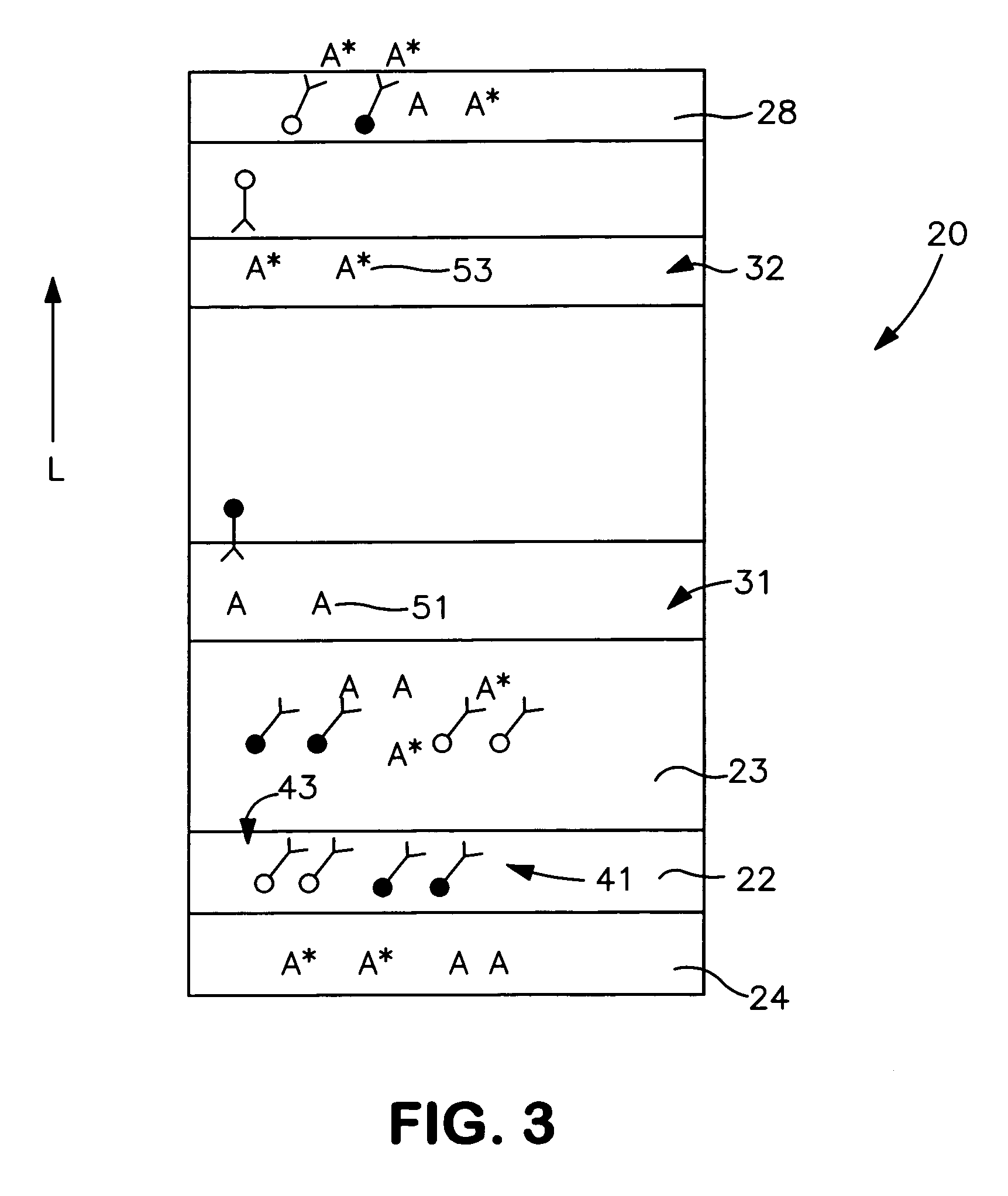Diagnostic test kits employing an internal calibration system
a technology of internal calibration and diagnostic test kits, which is applied in the direction of instruments, biological material analysis, measurement devices, etc., can solve the problems of burdensome pre-mixing of assay reagents, inability to readily incorporate internal calibration techniques into lateral flow devices, and over-complicated requirements
- Summary
- Abstract
- Description
- Claims
- Application Information
AI Technical Summary
Benefits of technology
Problems solved by technology
Method used
Image
Examples
example 1
[0056] The ability to form a lateral flow assay device in accordance with the present invention was demonstrated. A nitrocellulose porous membrane (HF 120 from Millipore, Inc.) having a length of approximately 30 centimeters was laminated onto supporting cards. Monoclonal antibody for C-reactive protein was immobilized on the porous membrane to form a detection zone. The antibody was obtained from BiosPacific, Inc. (Catalog #A58040136P) and had a concentration of 1 milligram per milliliter. Monoclonal antibody for β-HCG (1 milligram per milliliter) was also immobilized on the porous membrane to form a calibration zone. A cellulose wicking pad (Millipore Co.) was laminated with one end (closer to the calibration zone) of the membrane. The membrane samples were then dried for 1 hour at a temperature of 37° C.
[0057] A particle suspension was formed by mixing 36 microliters of gold particles conjugated with anti-CRP monoclonal antibody (BiosPacific, Inc., Catalog #A58110228P), 100 micr...
example 2
[0058] The ability to detect CRP in accordance with the present invention was demonstrated. Five lateral flow devices (Samples 1-5) were made as described in Example 1. A mixing solution containing 60 microliters of CRP (90 nanograms per milliliter) and 60 microliters of β-hCG (50 nanograms per milliliter) was applied to the sample pad of each of five lateral flow devices. After 30 minutes of development at room temperature, the color density of the detection zone and calibration zone was measured using a reflectance spectrophotometer. The color intensity for each zone is listed below in Table 1.
TABLE 1Color Intensity DataDetection ZoneDetection ZoneSampleIntensity (Id)Intensity (Ic)Id / Ic188.28595.2790.92659293.55498.3220.95115391.85098.8730.92897494.286101.5440.92852592.58099.9900.92589
[0059] The mean, standard deviation, and % CV (coefficient of variance, or ratio of standard deviation to mean) for Id was 92.111, 2.33127, and 2.531, respectively. On the other hand, the mean, sta...
example 3
[0060] The ability to detect CRP in accordance with the present invention was demonstrated. Fifteen lateral flow devices (Samples 1-15) were made as described in Example 1 and divided into three groups. The first group was stored at room temperature, the second group was heated at 65° C. for 40 minutes, and the third group was heated at 65° C. for 210 minutes. A mixing solution containing 60 microliters of CRP (100 nanograms per milliliter) and 60 microliters of β-hCG (50 nanograms per milliliter) in tris buffer with 1% Tween® 20 (ICI Americas) was applied to the sample pad of each of fifteen lateral flow devices. After 30 minutes of development at room temperature, the color density of the detection zone and calibration zone was measured using a reflectance spectrophotometer. The color intensities for each group are listed below in Tables 2-4.
TABLE 2Color Intensity Data for First GroupDetection ZoneDetection ZoneSampleIntensity (Id)Intensity (Ic)Id / Ic194.30399.1060.95154293.98097...
PUM
| Property | Measurement | Unit |
|---|---|---|
| diameter | aaaaa | aaaaa |
| diameter | aaaaa | aaaaa |
| length | aaaaa | aaaaa |
Abstract
Description
Claims
Application Information
 Login to View More
Login to View More - R&D
- Intellectual Property
- Life Sciences
- Materials
- Tech Scout
- Unparalleled Data Quality
- Higher Quality Content
- 60% Fewer Hallucinations
Browse by: Latest US Patents, China's latest patents, Technical Efficacy Thesaurus, Application Domain, Technology Topic, Popular Technical Reports.
© 2025 PatSnap. All rights reserved.Legal|Privacy policy|Modern Slavery Act Transparency Statement|Sitemap|About US| Contact US: help@patsnap.com



